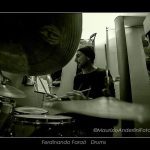 |
DORIS SALCEDOUntitled (camisas), 2013 |
DORIS SALCEDO OPENS AT THE GUGGENHEIM MUSEUM ON JUNE 26
Major Retrospective of the Colombian Artist Surveys Three Decades of Work Addressing Social Injustice, Memory, and Loss
Exhibition:
Doris Salcedo
Venue: Solomon R. Guggenheim Museum
1071 Fifth Avenue, New York
Location: Tower Levels 2, 4, 5, and 7
Dates: June 26–October 12, 2015
Media Preview: Thursday, June 25, 2015, 10 am–12 pm
(NEW YORK, NY–May 4, 2015)—From June 26 through October 12, the
Solomon R. Guggenheim Museum will present the first major retrospective
of the searing, deeply poetic work of the internationally influential
artist Doris Salcedo (b. 1958, Bogotá). Over the past three decades,
Salcedo has created sculptures and installations that address the
traumatic history of modern-day Colombia, as well as wider legacies of
suffering stemming from colonialism, racism, and other forms of social
injustice across the world. Installed within all four of the Tower
Levels of the museum, the exhibition will occupy approximately half of
the Guggenheim’s gallery space and will feature the artist’s significant
bodies of work from the late 1980s to the present.
Doris Salcedo is organized by the Museum of Contemporary Art
Chicago and curated by Madeleine Grynsztejn, Pritzker Director, and
Julie Rodrigues Widholm, Curator, with support from Steven L. Bridges,
Curatorial Assistant. The Solomon R. Guggenheim presentation is curated
by Katherine Brinson, Curator, Contemporary Art, with support from Susan
Thompson, Assistant Curator.
This exhibition is supported in part by the Juliet Lea Hillman Simonds Foundation.
The Leadership Committee for Doris Salcedo is gratefully
acknowledged for its support, with special thanks to Chair Tiqui Atencio
Demirdjian, and including Peter Brandt, Stefan Edlis and Gael Neeson,
The Diane and Bruce Halle Foundation, Jill and Peter Kraus, Cindy and
Howard Rachofsky, Anna Marie and Robert F. Shapiro, and Jerome and Ellen
Stern. Additional funding is provided by the Ministry of Foreign
Affairs, Embassy of Colombia.
About the Exhibition
Informed by in-depth
research during which the artist solicits firsthand testimonies from
victims of violent oppression, Doris Salcedo’s sculptures and
site-specific interventions forgo the direct representation of
atrocities in favor of evocative installations fashioned from disarming
materials and through intensely laborious techniques. By paradoxically
giving form to that which is absent, she creates objects and spaces of
quiet remembrance and communal mourning. Salcedo has written, “The only
concern of my work is what happens to human beings assaulted by
violence. . . . the only possible response I can give in the face of
irreparable absence is to produce images capable of conveying
incompleteness, lack, and emptiness.”
From the outset of her career, Salcedo has employed the strategy of
transmuting common domestic objects into vessels freighted with memories
and submerged narratives. The earliest works featured in the exhibition
incorporate hospital furniture that has been altered by the presence of
animal fiber and plastic doll parts. The skeletal frames of hospital
cots also are used in the installation Untitled (1989–90/2013),
in this case arrayed in bleak formation with eleven stacks of crisply
laundered white shirts. The shirts, which might otherwise evoke the
comforting harmony of a well-run home, are impaled by steel rebar in an
image of violent incursion. These sculptures are, in part, oblique
responses to tragic situations in Colombia, but their embodiment of the
experience of irreparable loss achieves universal resonance.
Her seminal work Atrabiliarios (1992–2004) creates a
chapel-like environment in which a series of wall niches enshrine worn
shoes. Covered with pieces of semitranslucent animal fiber sutured to
the wall with large, uneven stitches, the shoes are only partially
visible, giving them the hazy remove of a fugitive memory. In one of the
galleries the artist will configure sculptures from her celebrated body
of work dating from 1989–2008, comprised of pieces of domestic
furniture that have been suffused with concrete, as if muted and
immobilized by the weight of grief. Other series that conjure the
complex operation of mourning and memory include La Casa Viuda (1993–95), in which the artist combined disjunctive architectural elements with scraps of fabric and fragments of bone, and Unland
(1995–98), in which mismatched tables are forced together, their
surfaces populated with an intricate mesh of thread and human hair.
The exhibition will also feature two of Salcedo’s most recent major
installations, both of which draw on overtly funereal symbolism yet
propose a sense of magic in the apparent impossibility of their
materials. In Plegaria Muda (2008–10), viewers are surrounded
by a labyrinthine arrangement of units formed from pairs of tables, one
inverted on top of the other, through which blades of real grass
improbably sprout. The tables approximate the size of human bodies, and
together they recall a mass grave, their verdant surfaces suggestive of
nature’s power to both heal and erase. A Flor de Piel (2012) is
an enormous shroud created in homage to a nurse who was tortured and
murdered in Colombia. Its undulating fabric is painstakingly stitched
together from chemically preserved rose petals—a material replete with
romantic associations that at the same time mimics the appearance of
flayed skin. A similar dichotomy between horror and fragile beauty
charges Salcedo’s most recent series, Disremembered (2014).
Woven from innumerable strands of silk thread and burnt needles, these
works take the form of garments that would harm rather than comfort or
protect the wearer.
The presentation will also feature a short film documenting the
artist’s remarkable site-specific public projects and architectural
interventions over the past fifteen years, including iconic works
created for sites such as the Plaza de Bolívar in Bogotá and Tate
Modern’s Turbine Hall in London. Representing this pivotal aspect of the
artist’s practice, Doris Salcedo’s Public Works (2015; 25
min., 40 sec.) will be screened throughout the duration of the
exhibition in the New Media Theater on the museum’s lower level.
Doris Salcedo is accompanied by a fully illustrated
catalogue featuring scholarly essays by Elizabeth Adan, Associate
Professor of Art and Design, California Polytechnic State University,
San Luis Obispo; Katherine Brinson, Curator, Contemporary Art, Solomon
R. Guggenheim Museum, New York; Madeleine Grynsztejn, Pritzker Director,
Museum of Contemporary Art Chicago; Helen Molesworth, Chief Curator,
Museum of Contemporary Art, Los Angeles; Julie Rodrigues Widholm,
Curator, Museum of Contemporary Art Chicago; and Doris Salcedo. A
hardcover edition priced at $50 will be available at the museum store
and online at guggenheimstore.org.
Following its New York presentation, the exhibition will travel to the Pérez Art Museum Miami in 2016.
Education and Public Programs
Details about the public programs presented in conjunction with Doris Salcedo are posted on guggenheim.org/publicprograms. Highlights include:
Film: Doris Salcedo’s Public Works
Daily, 11 am–5:30 pm
New Media Theater A short video documenting the artist’s site-specific
public projects and architectural interventions is screened continuously
in conjunction with the exhibition. Free with admission.
Symposium
Friday, October 2
On the occasion of the
exhibition, scholars and writers join Doris Salcedo to address issues of
trauma, memory, and loss. $12, $8 members, FREE students with RSVP.
More information will be released closer to the date and will be
available at guggenheim.org/calendar.
Curator’s Eye Tours
Free with museum admission.
Friday, August 14, 12 pm
Tour led by Assistant Curator Susan Thompson.
Friday, September 11, 12 pm
Tour led by Curator Katherine Brinson and will be interpreted in American Sign Language.
About the Artist
Doris Salcedo was born in
1958, in Bogotá, Colombia, where she continues to live and work. She
holds a BFA from the Universidad de Bogotá Jorge Tadeo Lozano (1980) and
an MA in Sculpture from New York University (1984). She has served as
Director of the School of Plastic Arts, Instituto de Bellas Artes, Cali,
Colombia (1987–88), and as Professor of Sculpture and Art Theory,
Universidad Nacional de Colombia, Bogotá (1989–91). Salcedo has
presented solo exhibitions at the Casa de Moneda, Bogotá (1985); New
Museum of Contemporary Art, New York (1998); Tate Gallery, London
(1999); Camden Arts Centre, London (2001); Tate Modern, London (2007);
Instituto de Arte Contemporânea e Jardim Botânico, Belo Horizonte,
Brazil (2008); Museo Universitario Arte Contemporáneo, Universidad
Nacional Autónoma de México, Mexico City; Moderna Museet, Malmö, Sweden;
and Centro de Arte Moderna José de Azeredo Perdigão, Lisbon (all 2011);
and at the Pinacoteca do Estado de São Paulo (2012). She has
participated in group exhibitions at the São Paolo Biennial (1998);
Liverpool Biennial (1999); Documenta, Kassel, Germany (2002); Istanbul
Biennial (2003); Turin Triennial (2005); MoMA P.S.1 Contemporary Art
Center, New York; The Menil Collection, Houston (both 2008); and Hayward
Gallery, London (2010). Salcedo has received numerous awards and
honors, including a Solomon R. Guggenheim Foundation Grant (1995),
Ordway Prize (2005), and the Ninth Hiroshima Art Prize (2014).
About the Solomon R. Guggenheim Foundation
Founded in 1937, the Solomon R. Guggenheim Foundation is dedicated to
promoting the understanding and appreciation of art, primarily of the
modern and contemporary periods, through exhibitions, education
programs, research initiatives, and publications. The Guggenheim network
that began in the 1970s when the Solomon R. Guggenheim Museum, New
York, was joined by the Peggy Guggenheim Collection, Venice, has since
expanded to include the Guggenheim Museum Bilbao (opened 1997), and the
Guggenheim Abu Dhabi (currently in development). The Guggenheim
Foundation continues to forge international collaborations that
celebrate contemporary art, architecture, and design within and beyond
the walls of the museum, including the Guggenheim UBS MAP Global Art
Initiative and The Robert H. N. Ho Family Foundation Chinese Art
Initiative. More information about the Solomon R. Guggenheim Foundation
can be found at guggenheim.org.
VISITOR INFORMATION
Admission: Adults $25,
students/seniors (65+) $18, members and children under 12 free. The
Guggenheim’s free app, available with admission or by download to
personal devices, offers an enhanced visitor experience. The app
features content on special exhibitions as well as access to more than
1,500 works in the Guggenheim’s permanent collection. Additionally,
information about the museum’s landmark building is available in
English, French, German, Italian, and Spanish. Verbal Description guides
for select exhibitions are also included for visitors who are blind or
have low vision. The Guggenheim app is supported by Bloomberg
Philanthropies.
Museum Hours: Sun–Wed, 10 am–5:45 pm; Fri, 10 am–5:45 pm; Sat, 10
am–7:45 pm; closed Thurs. On Saturdays, beginning at 5:45 pm, the museum
hosts Pay What You Wish. For general information, call 212 423 3500 or
visit the museum online at: guggenheim.org
guggenheim.org/social
#DorisSalcedo


